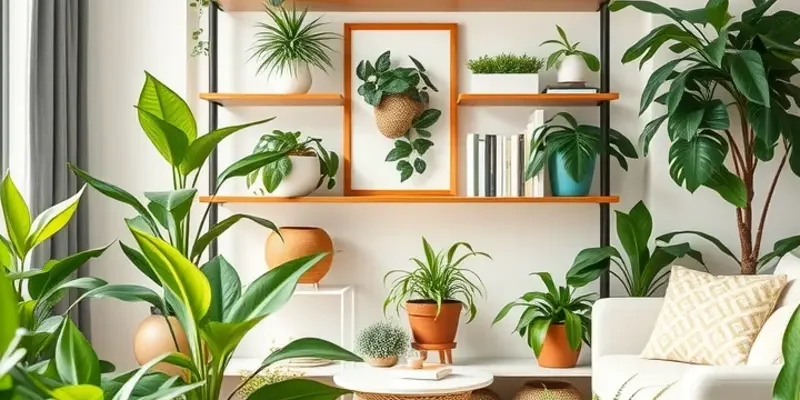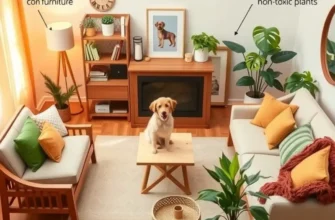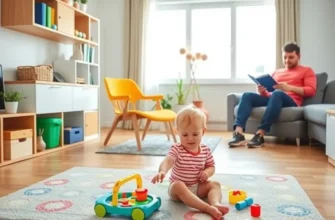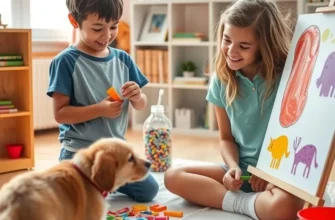Creating a warm and inviting home involves not only thoughtful decor but also ensuring that every element is safe for your loved ones. For families, pet owners, couples, and renters, the presence of plants can enhance the ambiance of an apartment while also promoting air quality. However, not all plants are child- and pet-friendly. The good news is that there are numerous beautiful and easy-to-care-for plants that are completely safe for your little ones and furry friends. This guide will help you choose the right plants for your apartment, focusing on those that fit seamlessly into your family-friendly lifestyle. From selecting the best varieties to understanding basic care practices, you can bring nature into your home without the worry of harmful effects.
Selecting the Right Child-Safe Plants
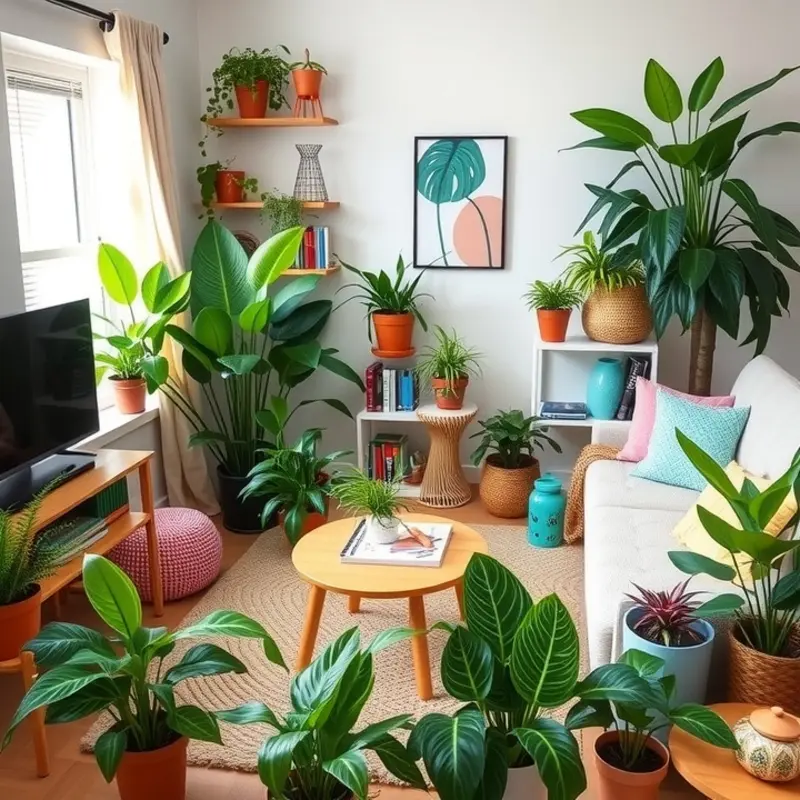
Choosing plants for a family home involves more than just aesthetics; ensuring they are safe for children and pets is crucial. While plants like peace lilies and English ivy are popular for their looks and air-purifying abilities, they can be toxic if ingested by kids or animals. Instead, here’s a selection of beautiful alternatives that are both safe and easy to care for.
Spider plants are a top choice for family homes. Their bright green leaves and unique look make them an attractive addition to any room. Spider plants are non-toxic and low-maintenance, thriving on indirect sunlight and a weekly watering schedule.
Boston ferns are another fantastic option, offering a lush, draping appearance that works well in hanging baskets. They prefer high humidity and indirect light, making them perfect for bathrooms or kitchens. Best of all, they are safe for children and pets.
Areca palms bring a tropical feel to any space while being entirely safe. They tolerate low-light environments and don’t require frequent watering, making them ideal for busy households.
Bamboo palms stand out as both air-purifying and non-toxic. Their bushy appearance provides ample greenery that many find delightful. With modest care requirements, they suit almost any light condition, needing u002015 water when their soil feels dry.
Gardening enthusiasts will appreciate calatheas for their vibrant, patterned leaves. These non-toxic plants need moist but not soggy soil and thrive with indirect light.
For those who prefer smaller plants, peperomias offer a variety of leaf shapes and colors. They’re known for their resilience and minimal care needs, doing well in both natural and artificial light.
By understanding the inherent dangers in some popular houseplants, you can make informed decisions to ensure safety. When selecting plants, researching their nature is vital to keeping your family and pets safe. In addition to this chapter, following safe home habits can further protect your loved ones—visit safe apartment laundry habits for helpful tips.
Selecting the right child-safe plants not only garnishes your home with beauty but also ensures a hazard-free environment. With a little research and attention, you can cultivate a green oasis that reflects safety and serenity for your family.
Caring for Your Green Companions
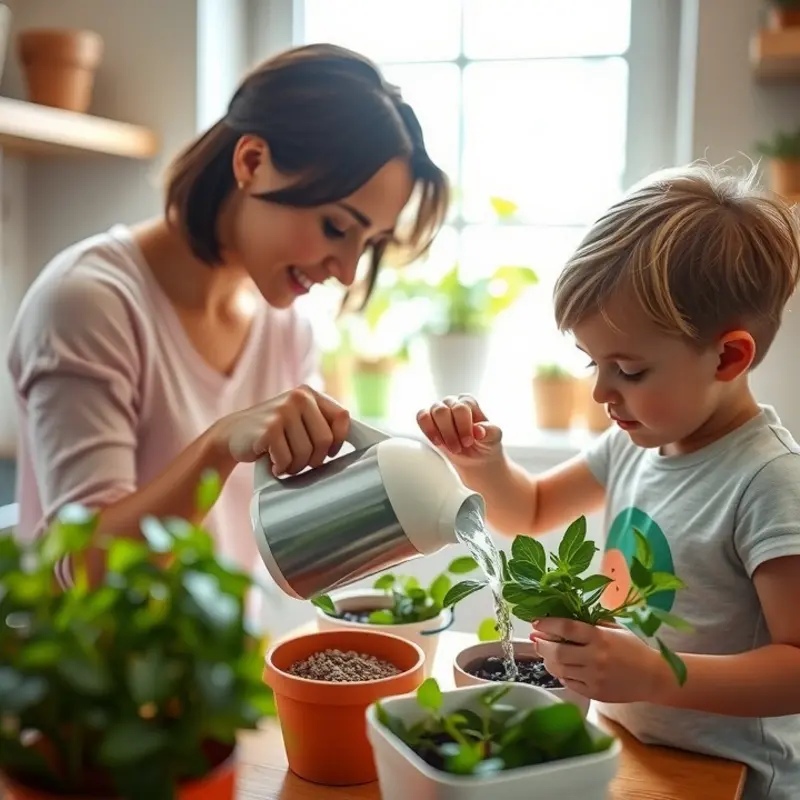
Tending to plants in an apartment setting brings both aesthetic appeal and health benefits. Selecting child-safe varieties eliminates many worries, leaving just the rewarding task of nurturing these green companions. Understanding their basic care needs ensures they not only survive but thrive in your home.
Watering Wisdom
Maintaining the right moisture levels is crucial. Most child-safe plants, such as spider plants and Boston ferns, prefer consistent but moderate watering. Over-watering can lead to root rot, while under-watering causes wilting. A simple guide is to let the top inch of soil dry out between watering sessions. Investing in a moisture meter can provide more accuracy, especially for parents balancing busy schedules.
Balancing Light and Shade
The amount of light your plants need depends on their species. Snake plants and peace lilies, for example, tolerate low light conditions well, making them ideal for dimmer corners. For species that require more sunlight, such as areca palms, consider placing them near windows with indirect sunlight to avoid leaf scorching. For apartments with limited natural light, you might explore low-light plant options to sustain a verdant environment.
Nutrient Needs
Proper nutrition can significantly impact plant health and growth. Feed your indoor greenery with a water-soluble, all-purpose fertilizer every few weeks during the growing season, typically spring and summer. Briefly reduce feeding in the fall and winter when growth naturally slows. This simple feeding regimen supports robust growth and helps these plants act as natural air purifiers.
Simple Pest Management
Keeping plants safe from pests is vital, especially with children and pets around. Regularly inspect leaves for common pests such as spider mites or aphids. Wiping leaves with a damp cloth or spraying them with a mild soap solution can effectively prevent infestations. Ensuring that plants aren’t too closely packed together allows air circulation, reducing the likelihood of pest issues.
Engaging Kids with Plant Care
Involving children in plant care can be educational and fun. Teach them about the plant’s needs and allow them to help with watering or dusting leaves. Creating simple routines can instill a sense of responsibility and provide bonding moments. Be patient and use these opportunities to discuss plant life cycles and how they contribute to a healthy home.
Safety Tips
While these plants are generally safe, it’s still wise to keep them out of reach of curious toddlers and pets when possible. Utilizing plant stands or hanging pots can offer additional safety while keeping greenery within view. Consider reading through our safe apartment laundry habits to ensure your home environment remains a sanctuary for all its residents.
Following these guidelines helps maintain the safety and beauty of your indoor garden while providing a welcoming space for both children and pets. Through thoughtful care, these plants can effortlessly enhance your family’s apartment life.
Final words
Choosing child-safe plants not only beautifies your apartment but also fosters a nurturing environment for your family. By selecting the right varieties and understanding their care needs, you can create a home filled with life and color. Your children’s safety and joy, along with your pets’ wellbeing, should always come first, making it essential to opt for non-toxic plants. The journey of nurturing plants with your loved ones can become a cherished family activity that not only ignites joy but also fosters responsibility, care, and a love for nature.

